How To Read A Depth Fish Finder
Sonar Nuts
How to read Sonar image
The deviation between a fish finder and a Sonar
Sonar is a high performance horizontal fish finder that tin detect and display the distribution of fish schools in all directions around your vessel.
While Fish Finders can notice echoes under the send, Sonars tin discover schools of fish all around the send, making it one of the well-nigh efficient way to search for fish.
Sonar image (Searchlight type)
Fish Finder 2 frequencies screenshot
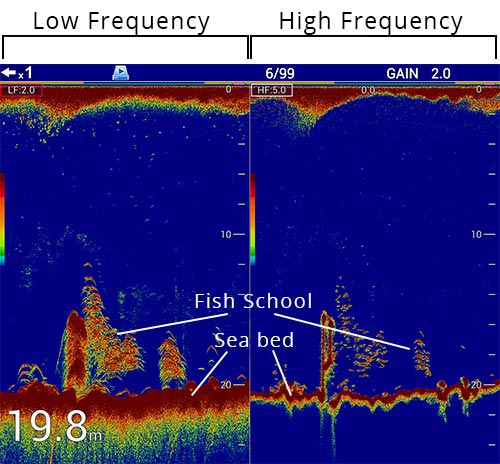
Searchlight Sonar 2 frequencies Screenshot
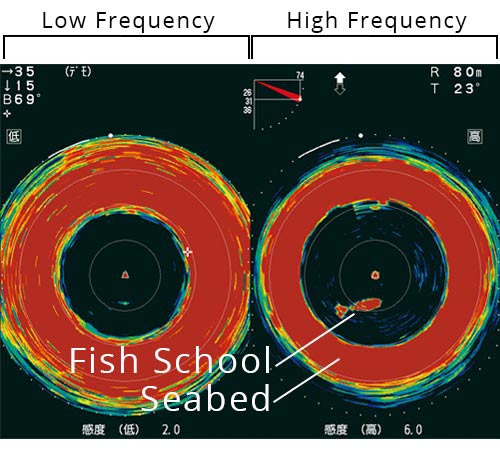
Sonar screen (Searchlight Sonar)
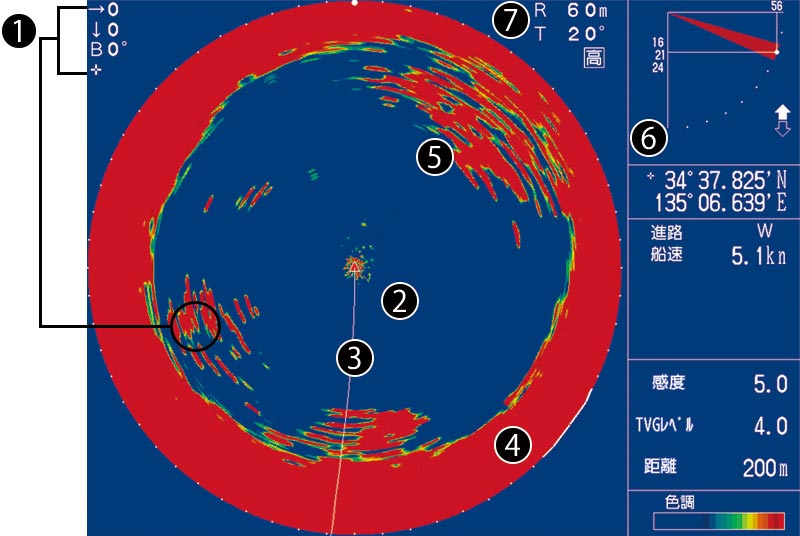
- Fish school echo; if you hover the cursor over the displayed echoes, it shows the distance from your transport to the fish school, as well as the target's depth and where it is located in relation to your vessel.
- Own send position (Triangle)
- Ship's runway (By connecting a GPS)
- Bounding main bed repeat (Information technology forms a ring as the sensor is rotating)
- Sea current repeat (Located insided the circumvolve, it generally looks like irregular echoes)
- Beam inclination (tilt)
- Range
Horizontal display mode
The image on the right is the basic horizontal display mode of the Sonar. The centre of the epitome represents the vessel's position, and the thin white line represents the vessel's track. As the track moves slowly to the left, you lot can deduce that the ship has been steered to port. The large, thick circumvolve effectually the ship is an echo of the sea bed. In this video example, the inclination angle (or tilt) is 21 degrees and the water depth is shallow, which is the reason why the echo of the bounding main bed is and then big. A big schoolhouse of fish appears alee of the vessel.
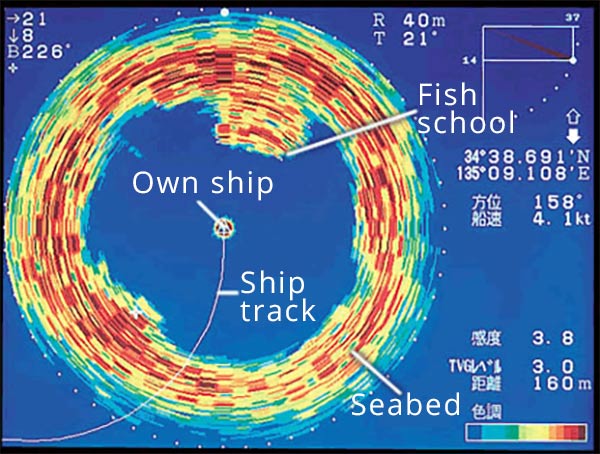
Cross-sectional brandish style
The Sonar displays not merely horizontal images, but also cross-sectional images to port and starboard, directly beneath your vessel. The Sonar is ideal for observing schools of fish from the seabed to the surface. The image on the right is a Sonar cross-exclusive epitome. The mark in the peak centre is the position of your vessel.
The Sonar detects fish from port to starboard while changing the angle at which the ultrasound is emitted. In the picture you tin can see the echo of a school of fish, nearly 12 metres to port, which swims at a depth of most 4 to half dozen metres. The long red line at the bottom shows the echoes from the seafloor.
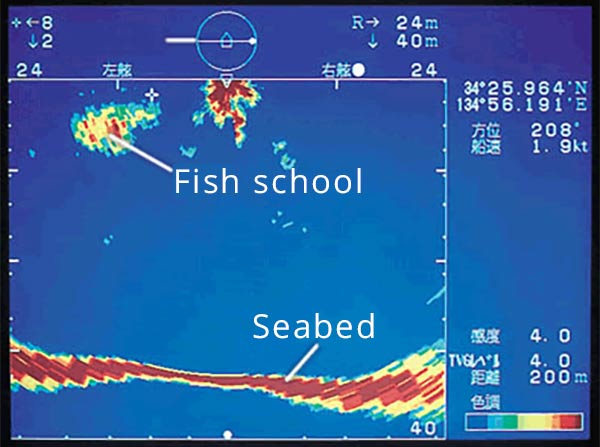
Dual Frequency display mode
In dual-frequency display mode, you tin search for schools of fish by comparing high and low frequency detection images. In the image on the right, The echo from the schoolhouse of fish on the right is slightly larger than the repeat on the left. You can deduce that the better target might be the one on the right represented by a larger echo.
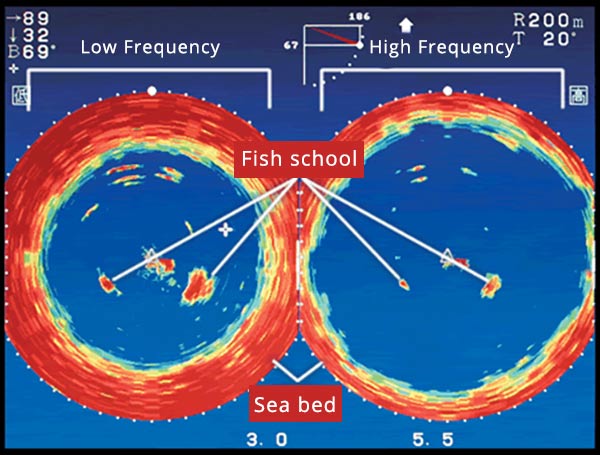
Sonar screen (Scanning Sonar)
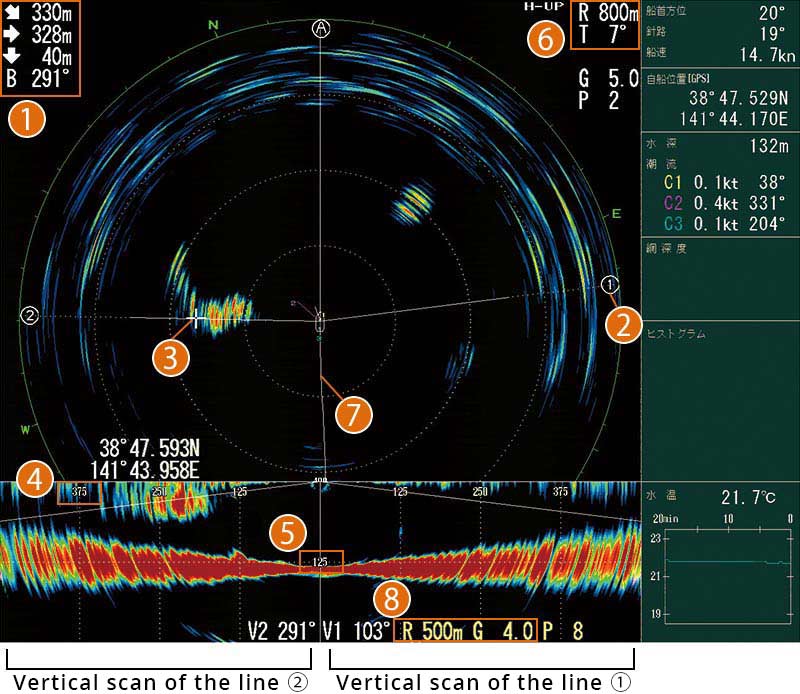
- By hovering the cursor over the targeted echo, this data box displays the horizontal and vertical distance to own ship as well equally the depth and the management of the target.
- Vertical browse of the line ①
- Cursor (currently on the fish school)
- Vertical mode, horizontal range (distance)
- Vertical way, Depth range
- Horizontal way range, Axle inclination (tilt), Display manner
- Own ship's track (Past connecting a GPS)
- Vertical mode range, proceeds
Horizontal display mode
The paradigm on the correct is the bones Sonar prototype in horizontal display style. The centre of the image is the position of the send, while the thin white line attached to it represents the ship's track. On the picture, there seems to be an echo of a schoolhouse of fish located ii km ahead of the boat.
Behind this echo, in that location is another repeat, probably that of a sea electric current. As the track moves slowly to the right, you can deduce that the ship has been steered to starboard. Finally, on the right, at that place is the echo of a ship sailing parallel to our ship.
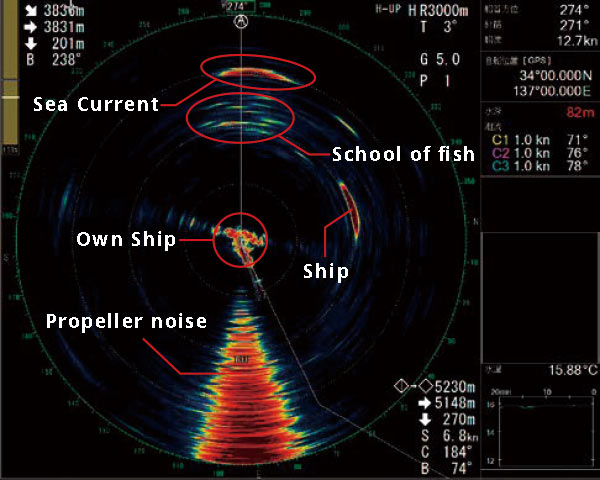
Dual screen display mode
Ii Sonar modes tin be displayed at the same fourth dimension. Each mode tin exist adjusted and configured independently of the other. The position (left or correct) and size can be freely adjusted according to the fishing method.
In the image on the right, the Sonar is in dual screen and dual frequency mode. The high frequency is displayed on the left and the low frequency on the right. Comparison the two modes, a rather large school of fish tin be detected on the bottom right and some other 1 on the left, and this is easily seen cheers to the dual screen configuration.
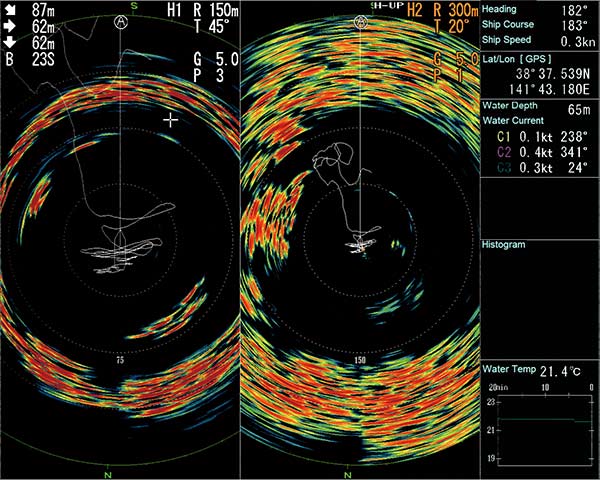
Horizontal and vertical dual orientation display mode
In the image, we can clearly see the activeness of the net on the fish afterward it has been closed to preclude them from escaping: the fish are "wrapped" past the net, and so the echo appears regular and very meaty.
By specifying the management you want to look, you tin can add together upwardly to ii additional vertical modes that will cover a 90 degree angle (from the horizontal sea surface to the seabed under the boat). It is very useful to compare two unlike echoes in two different directions.
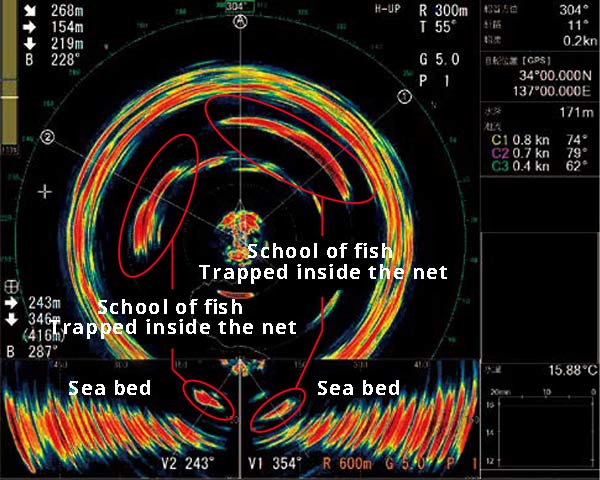
Source: https://www.furuno.com/en/technology/sonar/basic/view
Posted by: wagamangloold.blogspot.com


0 Response to "How To Read A Depth Fish Finder"
Post a Comment